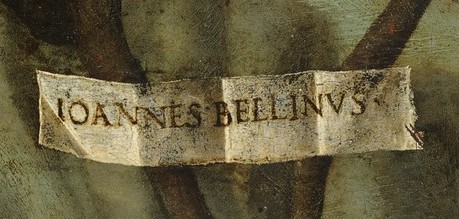|
St. Francis In Ecstasy (Zurbarán)
''Saint Francis'' (''of Assisi'') ''in Ecstasy'' is the title of several paintings: * ''Saint Francis in Ecstasy'' (Bellini) * ''Saint Francis in Ecstasy'' (Reni) * ''Saint Francis in Ecstasy'' (Zurbarán) * ''Saint Francis of Assisi in Ecstasy'' (Caravaggio) * ''Saint Francis of Assisi in Ecstasy'' (El Greco, 1600) {{Painting index ... [...More Info...] [...Related Items...] OR: [Wikipedia] [Google] [Baidu] |
Saint Francis In Ecstasy (Bellini)
''Saint Francis in Ecstasy'' (or ''Saint Francis in the Desert'') is a painting by Italian Renaissance master Giovanni Bellini, started in 1475 and completed around 1480. Bellini depicted the religious figure of Saint Francis of Assisi Giovanni di Pietro di Bernardone ( 1181 – 3 October 1226), known as Francis of Assisi, was an Italian mystic, poet and Catholic friar who founded the religious order of the Franciscans. Inspired to lead a Christian life of poverty, he ... in a landscape. In 1852, the painting was listed on June 19 at Christie's. It was part of the 1857 Manchester Art Treasures exhibition. In 1915, Henry Clay Frick bought the painting for $170,000, and it remains in the Frick Collection, in New York City. Subject The painting portrays Francis of Assisi, the Italian saint of the early 13th century, in an Italian landscape, stepping out in the sun from his cave, his figure anchoring the creamy celadon and golden-green Landscape painting, landscape. The ... [...More Info...] [...Related Items...] OR: [Wikipedia] [Google] [Baidu] |
Saint Francis In Ecstasy (Reni)
''St. Francis in Ecstasy'' is a 1622 oil on canvas painting by Guido Reni, now in the Coppola Chapel (dedicated to the saint depicted) in Girolamini church in Naples, Italy. History Its style is reminiscent of the same artist's ''The Mother'' in the Pinacoteca Nazionale di Bologna, thought to have been painted between 1615 and 1630. Reni's links to the Coppola family (if any) remain unknown. He was in Naples for ten years starting in 1612 to take part in painting the chapel of the treasure of Saint Januarius, but a 1626 inventory states that the painting was not yet in the Girolamini, although Carlo Celano mentioned viewing it in the chapel in 1692. The art gallery of the Oratorians of Saint Philip Neri, known as the , houses Reni's '' The Flight into Egypt'' and '' Jesus Meets John the Baptist''. The famous clothing designer and rich textile merchant Domenico Lercaro left his whole art collection to the Oratorians in Naples (owners of the Girolamini) and a codicil to his will ... [...More Info...] [...Related Items...] OR: [Wikipedia] [Google] [Baidu] |
Saint Francis In Ecstasy (Zurbarán)
''Saint Francis in Ecstasy'' is an oil painting on canvas of 1658–1660 by the Spanish painter Francisco de Zurbarán in the Alte Pinakothek in Munich, where it has been since 1836. It is one of Zurbarán's several paintings of Francis of Assisi, his name saint. It was his second-to-last work on the subject, the last being ''Saint Francis Praying in His Cave'' (in a private collection). When it was bought by Charles Theodore, Elector of Bavaria, in 1756 for his gallery in Mannheim, the work was misattributed to Guido Reni. It was moved to the Hofgartengalerie in Munich in 1799 and its attribution was corrected in 1818 by Johann Georg von Dillis, director of Ludwig I of Bavaria Ludwig I or Louis I (; 25 August 1786 – 29 February 1868) was King of Bavaria from 1825 until the German revolutions of 1848–49, 1848 revolutions in the German states. When he was crown prince, he was involved in the Napoleonic Wars. As ki ...'s royal collection.Ignacio Cano Rivero (ed.), ''Zurbar ... [...More Info...] [...Related Items...] OR: [Wikipedia] [Google] [Baidu] |
Saint Francis Of Assisi In Ecstasy (Caravaggio)
''Saint Francis of Assisi in Ecstasy'' (or ''The Ecstasy of Saint Francis'') is a painting by the Italian Baroque master Michelangelo Merisi da Caravaggio. It is now in the Wadsworth Atheneum, Hartford, Connecticut. The painting was the first of Caravaggio's religious canvasses, and is thought to date from 1595, when he had recently entered the household of Cardinal Francesco Maria Del Monte. It was presumably painted at the behest of Del Monte, and is thought to be one of the first paintings done by the artist as "Del Monte's painter", as he is believed to have described himself over the next few years while living in Palazzo Madama. It shows Saint Francis of Assisi (the Cardinal's name-saint) at the moment of receiving the signs of the Stigmata, the wounds left in Christ's body by the Crucifixion. The story is told by one of Francis' companions, Brother Leo. In 1224 Francis retired to the wilderness with a small number of his followers to contemplate God. On the mountainside ... [...More Info...] [...Related Items...] OR: [Wikipedia] [Google] [Baidu] |

